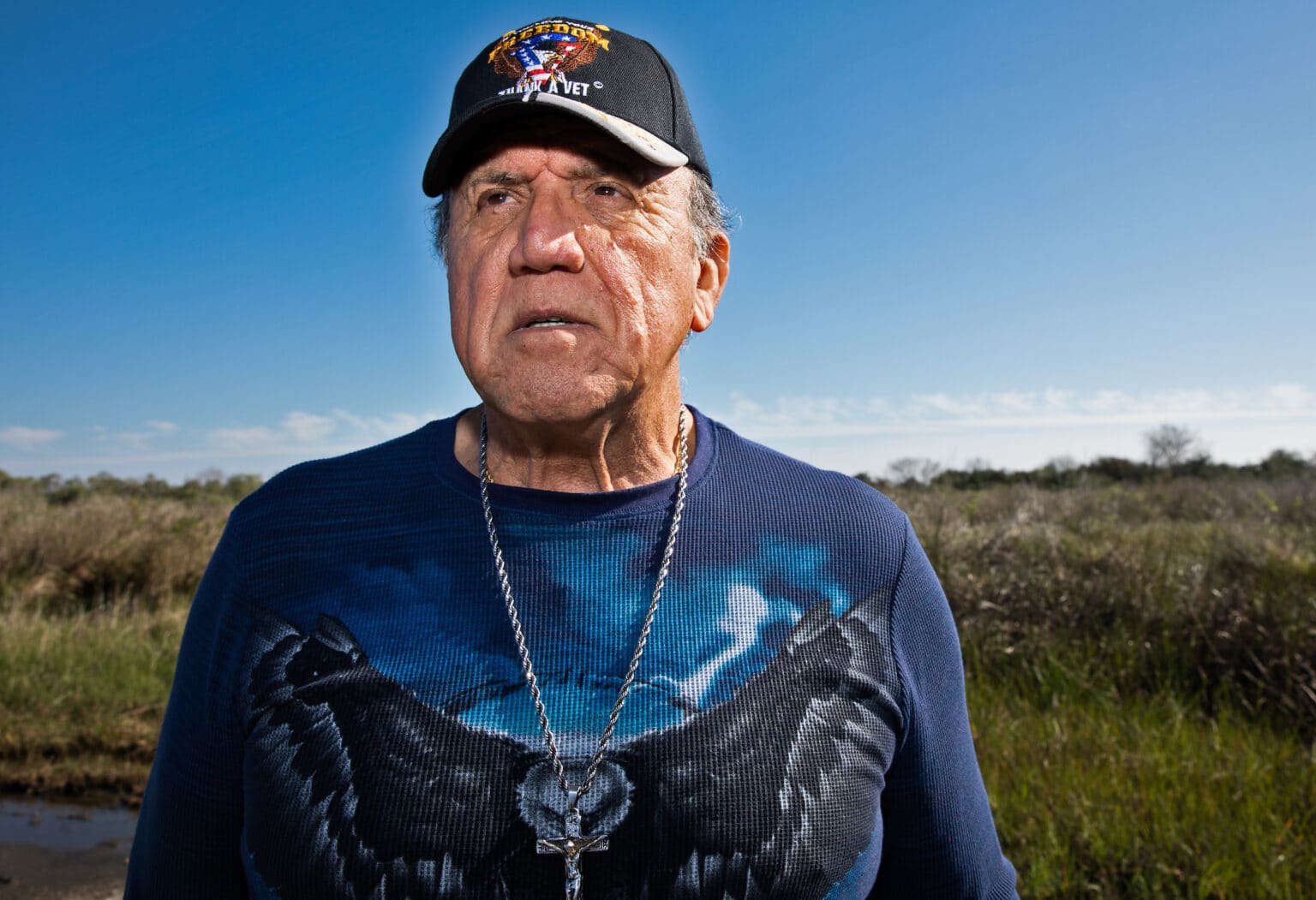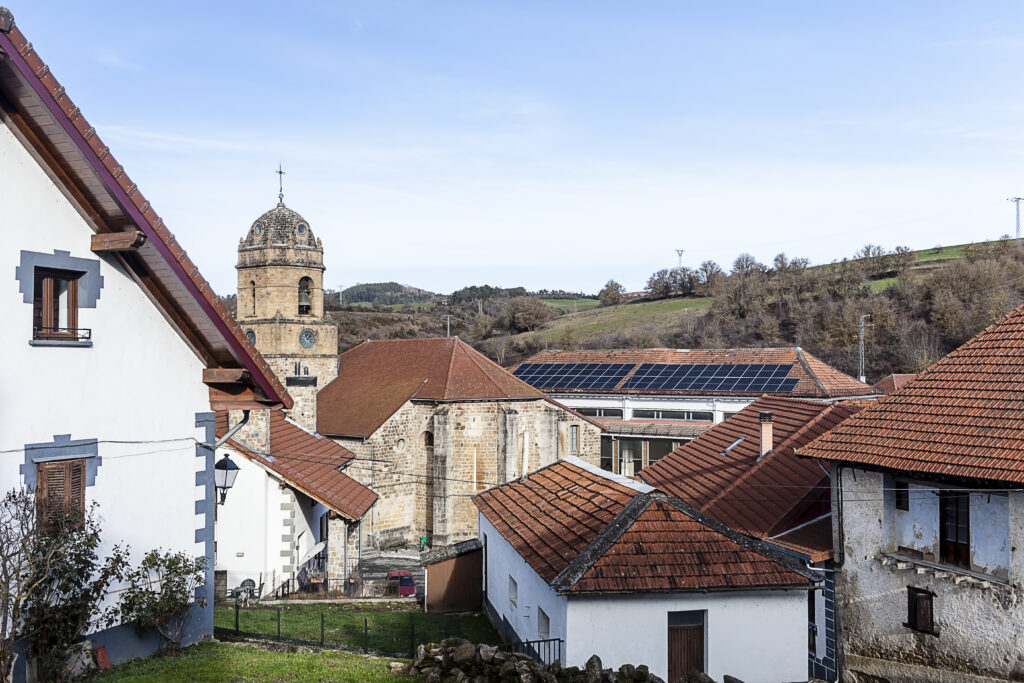For decades, federal and Louisiana state officials encouraged residents to permanently relocate from the Isle de Jean Charles — the shrinking traditional homeland of the Isle de Jean Charles Biloxi-Chitimacha-Choctaw (IDJC) Tribe — and they assured them that the Gulf Coast island would not be redeveloped if residents left.
However, changes in plans for the island, which has been threatened by over a century of oil and gas extraction, flood control development on the Mississippi River delta, and now climate change, are leaving tribal leaders increasingly “unsettled” in the years after their plans helped the state of Louisiana secure federal funding for resettlement in 2016. The result is a growing feeling among tribal leaders that new investments and proposals to turn the region into a recreational destination may continue a long history of displacement and colonization.
The latest in a string of changes on the island came on Thursday, July 15, at the Houma-Terrebonne Regional Planning Commission meeting when the Houma-based A.M. Dupont Corporation proposed a “minor subdivision” on Isle de Jean Charles. Parish approval would create seven lots out of a section of land owned by the company. Kenneth Rembert, a surveyor hired by A.M. Dupont, who spoke at the meeting, said the subdivision of land would enable the company to sell the lots to the fishing camp owners whose camps are already there, but who currently lease the land beneath them. Rembert also described the possibility of deepening the island’s bayou for a new fire hydrant.
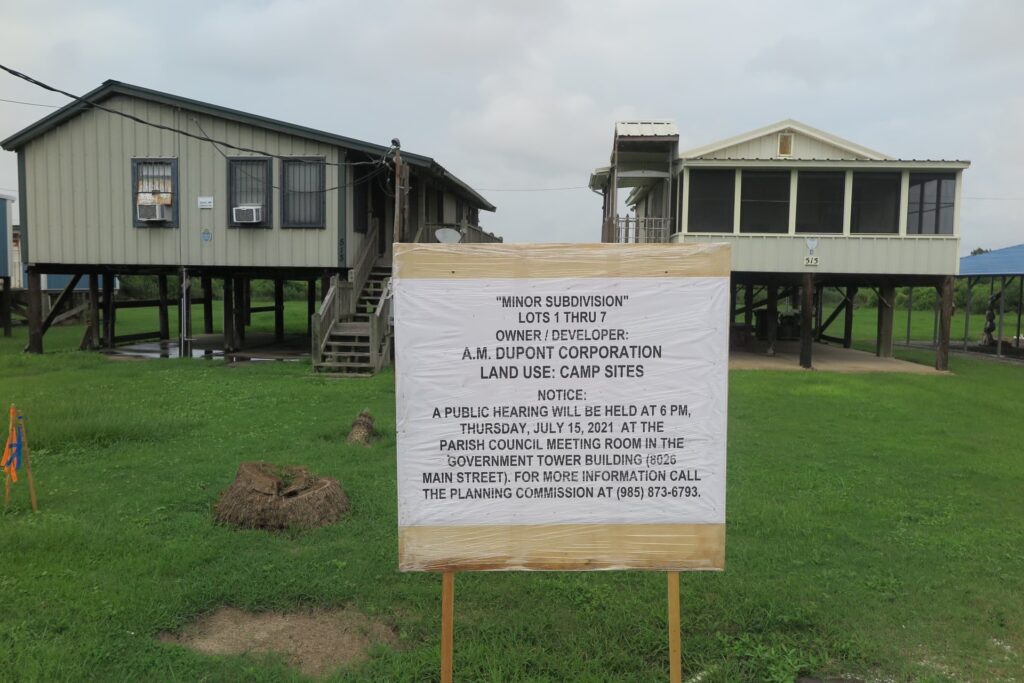
In a statement prepared for Thursday’s meeting, IDJC Tribal Chief Albert Naquin wrote, “Our Tribe has serious concerns about these actions.”
‘No Corporate Development’
Over the last 70 years approximately 98 percent of the Isle de Jean Charles’s landmass and surrounding marsh have washed away due to erosion and subsidence. Without the protective wetlands, storms worsened by climate change inundate the island each year. Chief Naquin compares the loss to a dying relative: “It’s like watching a family member with cancer … eaten away little bit by little bit.” The loss of subsistence lands and nearby development have led tribal citizens to work in regional industries — building boats and working in the oil and gas sector. Over 75 percent of the Tribe has left the island, often after storms. According to tribal leaders, the displacement has fractured relationships to the land and impeded efforts to sustain traditional knowledge and lifeways.
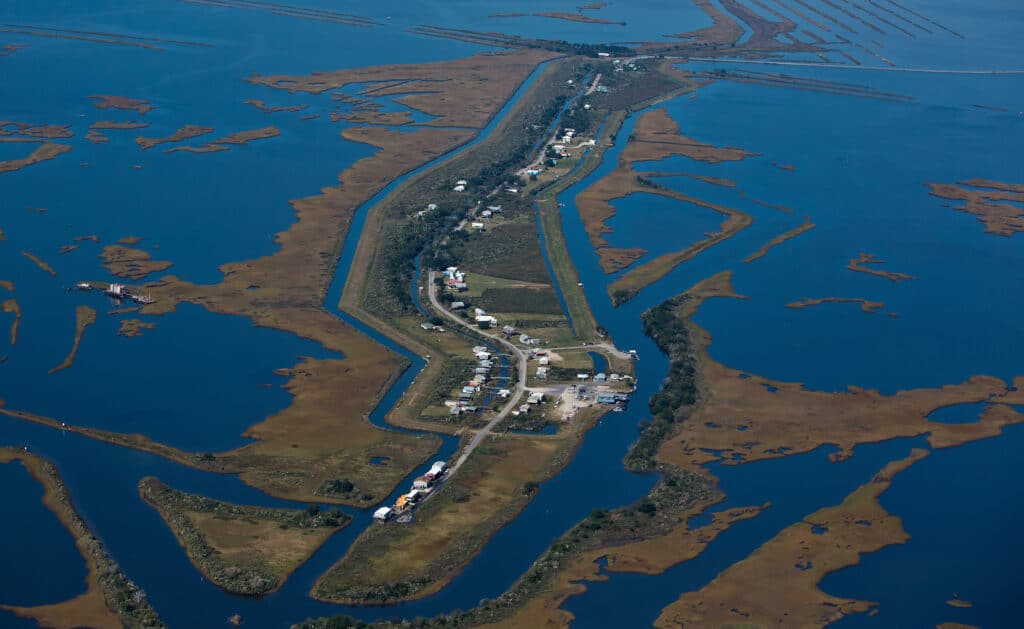
Formalized resettlement plans began to develop in 2002 when the U.S. Army Corps of Engineers determined that Isle de Jean Charles was too costly to include within the protection of the planned Morganza to the Gulf levee system. The environmental impact assessment for the project also concluded that the new alignment, north of the Isle de Jean Charles, would exacerbate flooding on the island.
Tribal leaders were told at the time that if residents moved off the island, access to it would still be protected and “no corporate development would take place on the Island.” Such assurances, and the prospect of reuniting their increasingly dispersed tribe while ensuring social and cultural preservation, led Isle de Jean Charles Biloxi-Chitimacha-Choctaw tribal leaders to begin planning their resettlement inland.
After more than a decade of searching for support, the Tribe’s resettlement plans were included in Louisiana’s application for federal funds. And in 2016, the U.S. Department of Housing and Urban Development (HUD) awarded the state $48.3 million for the resettlement. Since the award, the state has been accused of hijacking the Tribe’s existing plans, and to tribal leaders, the subdivision proposal indicates another change in the scope of the resettlement.
According to Chief Naquin’s statement, “When the resettlement plan was approved and funded by the U.S. Department of Housing and Urban Development, we agreed to it based on our understanding that part of the agreement was that IDJC [Isle de Jean Charles] would be left to nature, meaning no improvements or services would be provided to IDJC over time.”
Terrebonne Councilman John Amadée — whose district includes the inland resettlement site — agreed. After Thursday’s meeting, he observed, “The state said that the land was not going to be repurposed, but this is telling me that it is getting repurposed.”
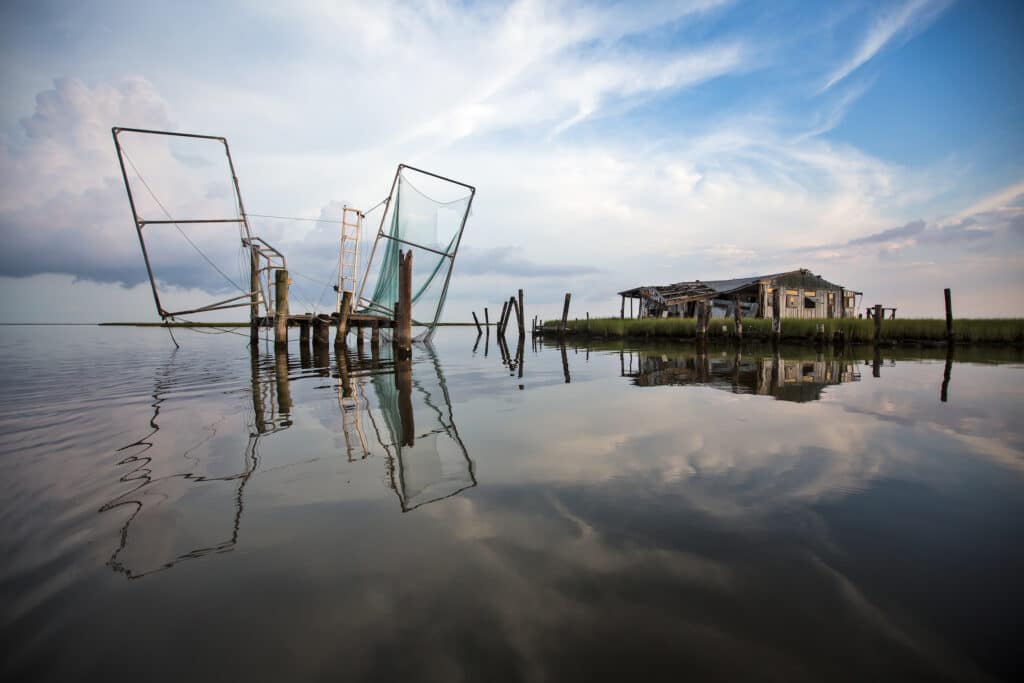
Per state requirements, island residents who move away must sign agreements preventing them from living on, selling, or making substantial repairs to island property. These restrictions do not apply to island property owners who are not resettling — like oil companies or fishing camp owners. Nearly all of Terrebonne Parish’s wetlands are privately held, and the largest landowners are oil and land companies: ConocoPhillips, Apache Corporation, and the Continental Land & Fur Company. The Houston-based oil and gas company Apache, in particular, owns a lot of land around and on the island. Oil companies also own recreational fishing camps in the region for some of their employees to enjoy.
According to a statement from Marvin McGraw of Louisiana’s Office of Community Development, “We do not have the authority to tell individual landowners who are receiving no money or considerations from us what they can and can’t do with their property.”
Adaptation or Gentrification?
Nonlocals have built “fishing camps” — often lavish vacation homes with modern amenities — on the island and in the surrounding area for decades. By 2016, there were 10 more camps on Isle de Jean Charles than permanent homes. A.M.’s proposal, however, comes after major recreational investments by the state on and around the island in the last year and the withdrawal of educational and other services from local Tribes.
Most recently, in April, Terrebonne Parish School Board voted to close an elementary school that serves the Isle de Jean Charles and Pointe-au-Chien Tribes despite widespread opposition. Parents have since filed a federal lawsuit to keep the school, located not far up the only road leading to the island, open and to ensure culturally appropriate curricula.
The school closure vote comes shortly after the Terrebonne Recreation Board purchased four acres next to the school for a public park and playground and just three months after the first federal funds for the Morganza to the Gulf levees were finally allocated. That is despite the Army Corps of Engineers having originally considered protecting the school and its ability to help maintain “community cohesion” as a benefit that would come out of the levee project.
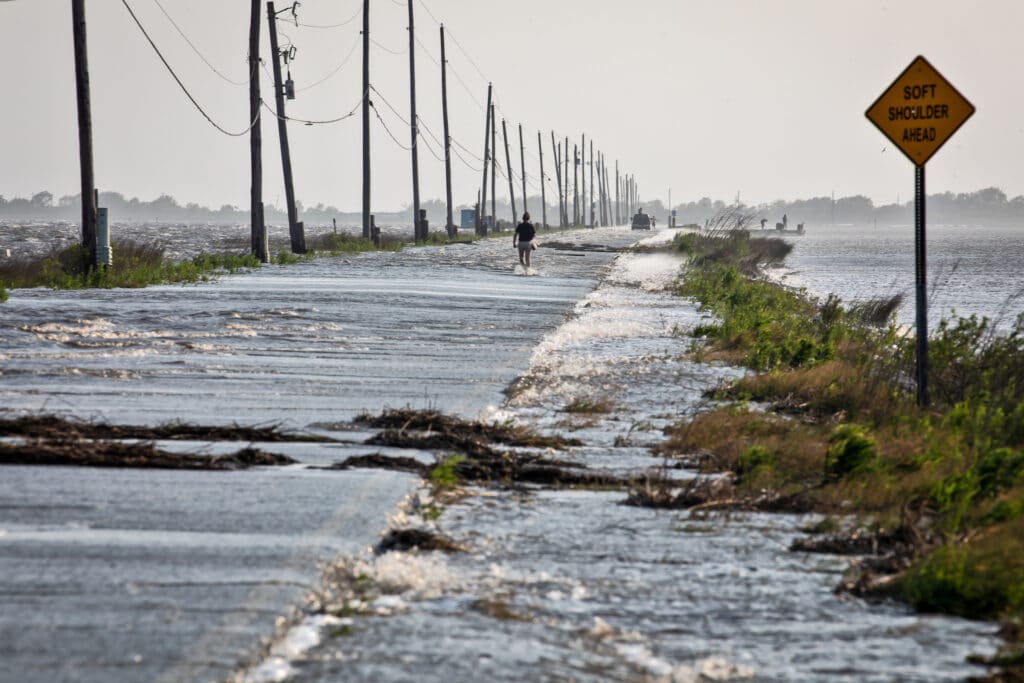
Additionally, in December 2019, the state provided $300,000 to the hunting-minded conservation nonprofit Ducks Unlimited for a project to restore the brackish marsh south of Island Road — the two-lane, flood-prone road that connects Isle de Jean Charles to the mainland. Then, last November, Louisiana’s Coastal Protection and Restoration Authority completed five fishing piers and small parking lots and a rock levee on Island Road. (The road enhancements were paid for with $2.4 million from the 2010 BP disaster settlement money.) Louisiana’s Department of Wildlife and Fisheries said the piers will allow “anglers” to “take advantage of the bounty in our Sportsman’s Paradise.”
Although Louisiana’s 2019 Regional Adaptation Strategy also encourages eco-tourism as a form of resilient coastal redevelopment, these upgrades reflect a shift from the Federal Emergency Management Agency’s 2008 refusal to fund “enhancements” to protect the road, and the state’s 2015 resettlement funding application explicitly cited the expectation that the road will soon be impassable as a rationale for the millions in federal resettlement funding.
Chief Naquin’s recent statement to the regional planning board points out these contradictions: “Now that the resettlement has been funded, we see improvements being made to our Island Roads and fishing piers. … Our school was recently shut down — we were told it didn’t make sense to keep it open. We recently learned that our school is being sold to a sporting organization. It seems IDJC is slated to become a recreational sporting island.”
A History of Legal Land Grabs
The post-resettlement Island Road enhancements and post-levee school closure may reflect a lack of coordination and consistency among agencies when it comes to flood protection and resilience planning.
Ultimately, however, the impact is the ongoing displacement of Indigenous peoples.
Like many prospectors throughout the early 20th century, A.M. Dupont amassed wetland properties in a series of questionable transactions just prior to expansive oil and gas development. Albert Marie Dupont — the company’s namesake — for example, acquired forty acres on Isle de Jean Charles at a 1917 sheriff’s auction organized by his brother, Sheriff Ernest Dupont, at the Houma Courthouse. The company then participated in oil and gas extraction in the marsh nearby.
As Isle de Jean Charles Biloxi-Chitimacha-Choctaw Secretary Chantel Comardelle reflected in a recent interview: “Because a small ridge of land is only good and profitable for the oil or as a ‘sportsman paradise,’ let’s invest in that, now that the Indians are gone.” In part to address the ongoing experiences of displacement, Comardelle has spearheaded a new campaign to establish a tribal museum and culture center called Preserving Our Place.
A 2020 complaint to the United Nations describes ecological destruction and threats posed by oil and gas extraction, manipulation of the Mississippi River delta, and regional development to the sovereignty of several Tribes in Louisiana. For instance, recreational development in neighboring Dulac was cited in the complaint as a driver of “economic displacement” that has pushed citizens of the Grand Caillou/Dulac Band of Biloxi-Chitimacha-Choctaw from their land.
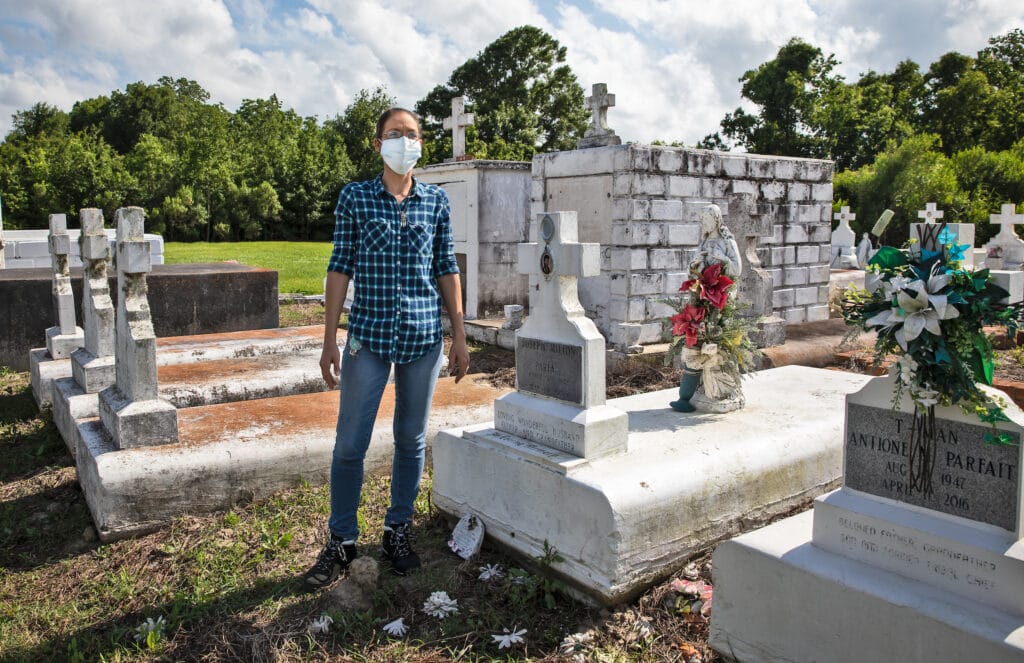
“I’ve seen this before, and it hasn’t stopped,” said their chief Shirell Parfait-Dardar, whose tribe in Louisiana is referenced in the UN complaint and whose husband is from Isle de Jean Charles. “It was obvious that they wanted the Natives gone before they began trying to improve the land. Our oppression hasn’t ended in over 500 years. At Thursday’s meeting I cried for our people, for our children and grandchildren.”
Another public hearing regarding the proposed subdivision will take place at next month’s Houma-Terrebonne Regional Planning Commission meeting.
Subscribe to our newsletter
Stay up to date with DeSmog news and alerts


